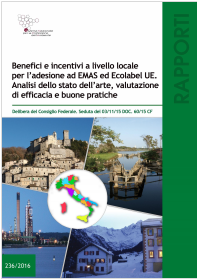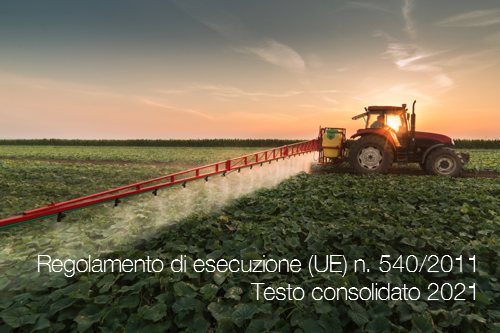Decisione di esecuzione (UE) 2018/896
Decisione di esecuzione (UE) 2018/896 della Commissione, del 19 giugno 2018, che stabilisce la metodologia di calcolo dell'utilizzo annuale di borse di plastica in...
ID 23109 | 12.01.2025
Il calcolo della quantificazione della Carbon Footprint di Prodotto (CFP) viene ad oggi effettuato seguendo i requisiti contenuti nella specifica tecnica PAS 2050, emessa dall'ente di normazione britannico BSI, o lo standard emesso dal WRI/WBCSD. Nel 2013 è stata realizzata la pubblicazione del nuovo riferimento normativo univoco a livello internazionale: la specifica tecnica ISO/TS 14067.
La PAS 2050 si basa sulle norme ISO 14040 e ISO 14044, limitate alle valutazioni relative alle emissioni di gas serra dovute al prodotto in esame. Questa procedura è proposta dalla Carbon Trust, una società che ha come scopo principale quello di favorire la conversione del mercato verso una economia ispirata a fonti energetiche a basso contenuto di carbonio.
Il valore ricavato dall’applicazione del metodo Carbon Trust può essere trasformato in etichetta (Carbon Reduction Label) che mostra quanto sostenibile sia il prodotto in termini di effetto serra, permettendo così di mettere a confronto prodotti diversi con la stessa funzione, ferme restando le precauzioni già menzionate riguardo all’uso di un solo indicatore di impatto.
Il valore nella etichetta può risultare uno strumento di scelta che orienta il compratore nella fase di acquisto. Questo standard non considera i potenziali impatti sociali, economici e ambientali come le emissioni di gas non ad effetto serra, l'acidificazione, l'eutrofizzazione, la tossicità, la biodiversità, le norme sul lavoro o altri impatti sociali, economici e ambientali che possano essere associati con il ciclo di vita dei prodotti.
1. Definizione degli obiettivi, scelta dei prodotti, coinvolgimento dei fornitori.
2. Definizione dell’unità funzionale e dei confini del sistema: in particolare l’unità funzionale, è l’ unità di riferimento, mentre i confini del sistema dovrebbero almeno considerare le fasi del ciclo di vita che generano la maggior quota di emissioni.
3. Raccolta dei dati;
4. Calcolo delle emissioni: è il calcolo tra la quantità utilizzata di un prodotto e il suo fattore di emissione (kg CO2eq./U.M.); inoltre trasforma i gas a effetto serra in CO2 eq. attraverso i potenziali di riscaldamento globale pubblicati dall’IPCC.
5. Controllo e validazione dei risultati: la verifica può essere affidata a un ente terzo oppure può essere un’auto-dichiarazione dell’organizzazione.
La valutazione prevista dalla PAS può essere eseguita:
a) da azienda-verso-consumatore (dalla culla alla tomba), che include le emissioni derivanti dall’intero ciclo di vita del prodotto; oppure
b) da azienda-verso-azienda (dalla culla al cancello), che include le emissioni di gas serra rilasciate e comprese fino al punto in cui l'input arriva ad una nuova organizzazione (comprese tutte le emissioni a monte).
La PAS 2050 è diffusa in 80 paesi ed è diventata uno dei principali strumenti di comunicazione in grado di fornire al consumatore una possibilità di scelta tra prodotti più o meno impattanti.
...
This Publicly Available Specifi cation (PAS) specifi es requirements for the assessment of the life cycle GHG emissions of goods and services (collectively referred to as “products”) based on key life cycle assessment techniques and principles. This PAS is applicable to organizations assessing the GHG emissions of products across their life cycle, and to organizations assessing the cradle-to-gate GHG emissions of products.
Requirements are specified for identifying the system boundary, the sources of GHG emissions associated with products that fall inside the system boundary, the data requirements for carrying out the analysis, and the calculation of the results.
This PAS addresses the single impact category of global warming. It does not assess other potential social, economic and environmental impacts or issues arising from the provision of products or issues associated with the life cycle of products, such as non-GHG emissions, acidifi cation, eutrophication, toxicity, biodiversity or labour standards. The life cycle GHG emissions of products, as calculated using this PAS, do not provide an indicator of the overall environmental impact of these products, such as may result from other types of life cycle assessment.
PAS 2050 is generically applicable to a wide range of goods and services. However, this revision includes principles for the preparation and use of supplementary requirements to provide a focused approach for specific industry sectors or product categories in a manner that will facilitate consistent application of PAS 2050 within the particular sector or product category.
This PAS does not specify requirements for the disclosure or communication of the results of a quantifi cation of the life cycle GHG emissions of goods and services.
PAS 2050-1 specifies supplementary requirements for use in conjunction with PAS 2050 for the cradle-to-gate assessment of the GHG emissions from the cultivation stages of horticultural products.
PAS 2050-1 is appropriate for use by organizations operating in the horticultural sector, intending to undertake a programme of GHG emission reduction of their product lifecycle or those needing to provide information on the GHG emissions from their products to downstream business partners. PAS 2050-1, which has been developed in accordance with the principles set out in clause 4.3 of PAS 2050, follows the structure and form of that PAS.
It clearly identifies where PAS 2050 requirements are to be applied without supplement and provides sectorspecifi c requirements that are supplementary to PAS 2050 requirements, where permitted by that PAS. As with PAS 2050, PAS 2050-1 addresses the single impact category of global warming potential. It does not assess other potential social, economic and environmental impacts arising from the provision of horticultural products, such as non-greenhouse gas emissions, acidification, eutrophication, toxicity, biodiversity, labour standards or other social, economic and environmental impacts that may be associated with the life cycle of such products.
An assessment of the GHG emissions of horticultural products using PAS 2050-1 in conjunction with PAS 2050, does not provide an indicator of the overall environmental impact of these products, such as may result from other types of life cycle assessment. In line with the principle adopted for PAS 2050, PAS 2050-1 does not specify requirements for communication of assessment outcomes but both directly and by reference to PAS 2050, does include specific requirements relating to how information on GHG emissions arising during the cradle-to-gate stages of horticultural products, is to be conveyed to downstream business partners.
...
Collegati
Decisione di esecuzione (UE) 2018/896 della Commissione, del 19 giugno 2018, che stabilisce la metodologia di calcolo dell'utilizzo annuale di borse di plastica in...

Benefici ed incentivi a livello locale per l’adesione ad EMAS ed Ecolabel UE. Analisi dello stato dell’arte, valutazione di efficacia e buone pratiche.

Regolamento di esecuzione (UE) n. 540/2011 della Commissione del 25 maggio 2011 recante disposizioni di attuazione del regolamento (...
Testata editoriale iscritta al n. 22/2024 del registro periodici della cancelleria del Tribunale di Perugia in data 19.11.2024